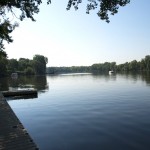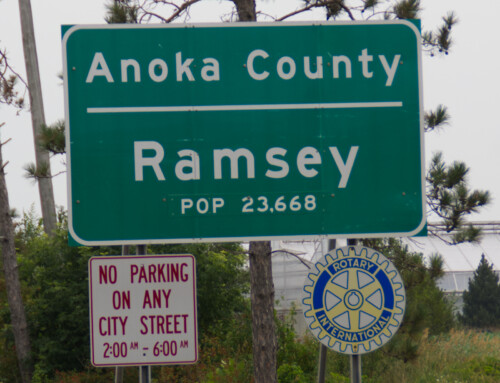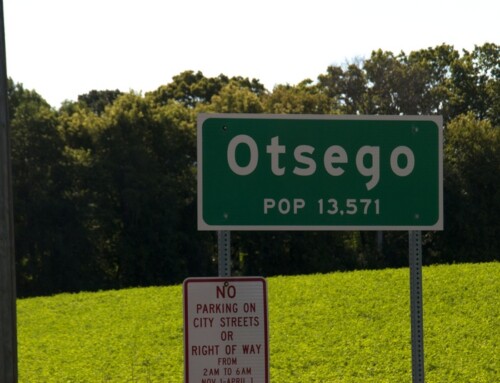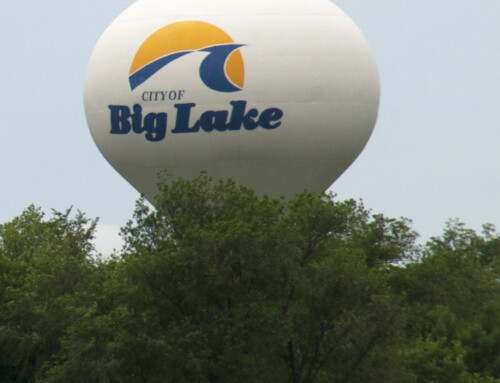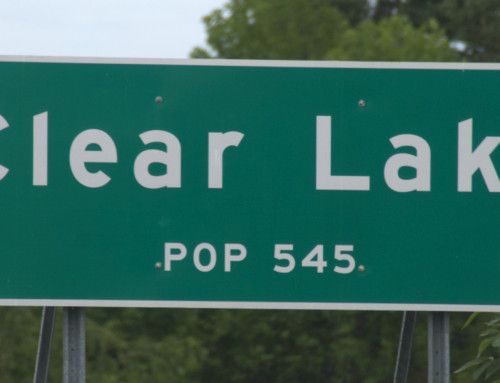Visitor Information
Direct your questions to the Anoka Area Chamber of Commerce (763.421.7130).
History

Kline Sanatorium
Anoka sprouted up because of its ready access to water transportation. Joseph Belanger, with help from a few others, erected a trading post for William Aitkin on the peninsula between the Rum and Mississippi Rivers in 1844. Belanger and his crew lived at the post through a couple of winters (Aitkin never did) before Aitkin abandoned it and the men relocated downriver to Mendota.
The origin of the city’s name is not entirely clear, although it seems that Joseph Belanger was the first person to use “Anoka” to refer to this area. In the 1905 county history, Albert Goodrich seemed pretty confident that the word was from the Ojibwe language although the translations he provided don’t seem very convincing (An-o-kay’: having it done, or has it done or An-o-keh’: He is working or is at work). Belanger claimed that the word simply meant “river that works.” Other historians have asserted that the word is really derived from the Dakota language (A-no’ka, meaning on both sides, although it is used only as part of the adverb A-no-‘ka-tan-han, meaning on both sides or from both sides).
Settlers trickled into the area in sufficient numbers to justify a post office by 1853; in the fall of that year, one Mr. Larned picked up the mail at St. Anthony (Minneapolis) and carried it to Anoka in his hat (there weren’t any packages from Amazon to worry about at that time).
Logging began along the Rum River in the late 1840s (when the Red River Ox Cart Trail was still active) and by the 1860s, it was lined with sawmills, employing about 500 men who cut 350,000 board feet of lumber every day. In spite of the sawmills, Anoka was still largely rural, which may be why voters twice rejected attempts to incorporate (in 1858 and 1869) before consenting in 1878.
Most of the sawmills closed in the 1870s as the nearby forests were denuded. Some old mills were converted to other uses; one became the Reed & Sherwood Manufacturing Company, which produced sashes and doors until 1946.
Residents crossed the Mississippi River via a ferry from 1856 until 1884 when the first bridge was built, then Anokans could take a streetcar across the river, and, by the early 1900s, all the way to Minneapolis.
By the dawn of the 20th century, Anoka was a fairly big city, with a population around 4,000, home to small manufacturing, farming-related industries, and psychiatric hospitals (Dr. Kline’s Sanatorium and Anoka State Hospital). Anoka never experienced the explosive growth common to its neighbors, but the city grew steadily after World War II, peaking around 18,000 residents.
The city has been strengthening the town center in recent years, which has a growing collection of places to eat and shop.
Exploring the Area
The Mississippi National River and Recreation (651.290.4160) runs for 72 miles through the Twin Cities. While the National Park Service owns very little land along the corridor, it has many programs to help connect people to the river. Visit their website for a complete listing of places to enjoy the river.
Parks Along the Mississippi River
- Mississippi River Community Park (2751 Cutters Grove Ave.)
- Peninsula Point Two Rivers Historical Park (1460 Ferry Rd.)
Entertainment and Events
Farmers Market
Anoka hosts a farmers market is on Mondays from 3-6 from early July through October at the Lyric Arts parking lot (420 E. Main; 763.792.4025).
Festivals
Anoka’s annual festival is Riverfest, which is a big craft fair in the center of town spiced up with live music; look for it in mid-July.
**Anoka and the Twin Cities are covered in Road Tripping Along the Great River Road, Vol. 1. Click the link above for more. Disclosure: This website may be compensated for linking to other sites or for sales of products we link to.
Getting There
If you don’t feel like driving to these parts, the Northstar Line commuter railroad has a station at Anoka; the line begins in downtown Minneapolis (at the Target Field Station) and ends at Big Lake.
Where to Go Next
See the Twin Cities Overview for tips on festivals, getting around, and more.
Continuing downriver? Check out Coon Rapids.
Continuing upriver? Check out Ramsey.
Community-supported writing
If you like the content at the Mississippi Valley Traveler, please consider showing your support by making a one-time contribution or by subscribing through Patreon. Book sales don’t fully cover my costs, and I don’t have deep corporate pockets bankrolling my work. I’m a freelance writer bringing you stories about life along the Mississippi River. I need your help to keep this going. Every dollar you contribute makes it possible for me to continue sharing stories about America’s Greatest River!
©Dean Klinkenberg, 2024, 2021, 2018,2013,2011
